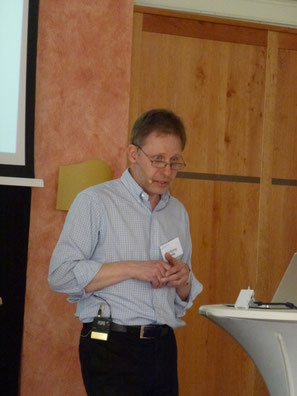
It is now four decades ago that a 21-year-old Brazilian, who up to that point had mainly been earning his living as a rock band guitarist, took over a mechanical engineering company from his father, a native Austrian. The company was on the brink of ruin, but young Ricardo Semler had a million ideas, boundless energy and was hungry for action and influence. He was also a hothead who dismissed 60% of his top managers in a single afternoon because they did not want to do things his way.
At the age of 25, with the help of a few "get tough" managers, he had restructured the "Semco" company and ruined his health, as doctors confirmed to him after a stress-related breakdown. Soon afterwards he realized that his employees were in much the same position. Although the company was in the profit zone, the employees were exhausted, and the workplaces were staffed by dissatisfied, unhappy and permanently overworked people who would probably not be able to keep going at this pace forever any more than he himself could. The employee turnover rate was already an indication of this.
Influenced by Peter Drucker, Michael Porter and Henry Mintzberg, but especially after meeting Clóvis da Silva Bojikian, an internal management trainer at Ford, he radically changed his views on corporate management and consequently his company itself. Bojikian was an enthusiastic fan of A. S. Neill's “Summerhill”, a school in which the students had the greatest possible freedom and were involved in numerous decisions concerning the management of the school and themselves.
Semler began to shape his company according to similar fundamental values. He came to the conclusion that he had hired people who, when they were not working for his company, were electing governments, leading community projects, founding families and making future-oriented decisions on a daily basis, but that the associated skills had thus far largely been left untapped in his company. Step by step, he began to exert his influence on his company’s culture in order to harness this capital.
The Result
Semco became a company,
- which, despite having several thousand employees, has only 3 hierarchical levels
- whose employees determine their own working hours and remuneration schemes
- in which employees hire and assess their superiors themselves
- where mats can be found everywhere to allow employees to take short afternoon naps
- in which there are no organization charts, five-year plans or a written mission statement or other written rules (apart from a short "survival manual" in the form of a comic)
- whose employees elect the company management
- which has a staff turnover rate of 2% compared to a national industry average of 18%.
- which has had average annual growth of just under 40% over the past 20 years despite difficult and frequently changing political conditions.
In recent years, the SEMCO Group has developed into an associative network with various partners, which has significantly expanded the portfolio of the original mechanical engineering company and enabled further growth.
Ricardo Semler himself has taught at several American universities, is the author of several books, has received many awards and honours, but is also often criticised as an illusionist and has, for example, been publicly accused by the Brazilian Federation of Industry of undermining managers’ position of authority. In recent years he has increasingly withdrawn from the management of his company and is active in the environmental movement and has dedicated himself to numerous social projects.
Lessons learned

When I tell this story, despite the company's 40-year success story, I am always faced with a certain amount of scepticism as to whether such a system can really work, but at the same time, however, also curiosity about how something like this works in practice. The example proves to me that there are many ways to successfully structure companies. The classic hierarchical form is one possibility, Semco another.
Of course, the methods that one company successfully implements cannot be directly transferred to another company. Working with my clients is, however, always particularly exciting when we discuss opportunities for employee participation in their own companies using such concrete examples.
Among other things, we focus on the following questions:
- Which specific management tools can be derived from the examples and used in their own companies?
- How exactly are decision-making processes carried out in such organisations?
- What role does personnel development play in such a system?
